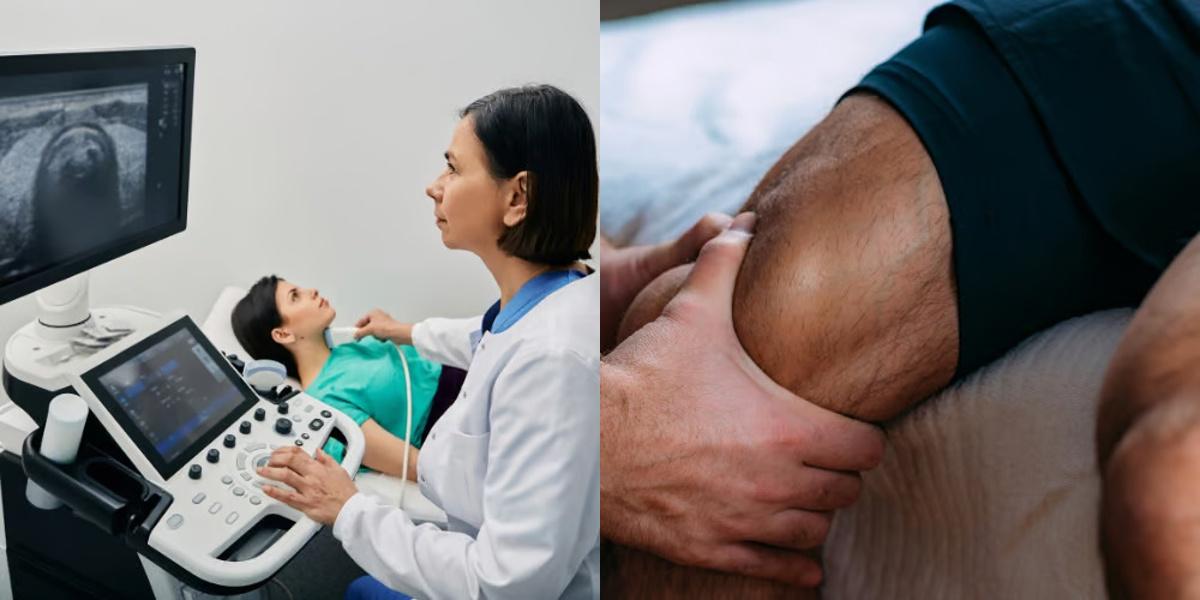Diagnostic Medical Sonographer vs Massage Therapist

Key Points:
- Diagnostic Medical Sonographers use imaging technology to assist doctors, while Massage Therapists provide therapeutic massage to clients.
- Diagnostic Medical Sonographers typically earn higher salaries than Massage Therapists.
- Diagnostic Medical Sonographers require formal education and certification, while Massage Therapists may have more flexible training options, including online programs.
In today's world, there are countless career paths to choose from. Two popular options in the healthcare field are becoming a diagnostic medical sonographer or a massage therapist. Both professions involve working with patients, but they differ greatly in terms of job duties, education, and career outlook. In this blog post, we will explore the similarities and differences between these two careers to help you decide which path is right for you.
Diagnostic Medical Sonographer vs Massage Therapist: Education and Training
Diagnostic Medical Sonographer:
- Education: Most diagnostic medical sonographers have an associate's degree in sonography or a related field. Some programs also offer bachelor's degrees in sonography.
- Certification: Many employers prefer to hire sonographers who are certified by the American Registry for Diagnostic Medical Sonography (ARDMS). Certification typically requires passing an exam after completing an accredited program.
- Clinical Training: Sonography programs often include clinical training, where students gain hands-on experience under the supervision of experienced sonographers.
Massage Therapist:
- Education: The educational requirements for massage therapists vary by state. Some states require completion of a postsecondary education program, while others only require a high school diploma or equivalent. Massage therapy programs typically range from 500 to 1,000 hours of study.
- Licensing: Most states require massage therapists to be licensed. Licensing requirements typically include completing an approved massage therapy program and passing a state exam.
- Continuing Education: Massage therapists are often required to complete continuing education courses to maintain their licenses. These courses help them stay updated on new techniques and advancements in the field.
Diagnostic Medical Sonographer vs Massage Therapist: Career Outlook and Salary
Diagnostic Medical Sonographer:
- Career Outlook: The demand for diagnostic medical sonographers is expected to grow much faster than average due to the aging population and increased need for diagnostic imaging. Sonographers can find employment in hospitals, clinics, and medical imaging centers.
- Median Salary: According to the Bureau of Labor Statistics, the median annual wage for diagnostic medical sonographers was $75,920 as of May 2020.
Massage Therapist:
- Career Outlook: The demand for massage therapists is also expected to grow faster than average as more people recognize the benefits of massage for relaxation and overall wellness. Massage therapists can work in a variety of settings, including spas, wellness centers, hospitals, and private practices.
- Median Salary: According to the Bureau of Labor Statistics, the median annual wage for massage therapists was $43,620 as of May 2020.
Final Thoughts
Choosing a career path is a significant decision that requires careful consideration. Both diagnostic medical sonography and massage therapy offer rewarding opportunities in the healthcare field. If you have a strong interest in medical imaging and enjoy working with advanced technology, becoming a diagnostic medical sonographer may be the right choice for you. On the other hand, if you have a passion for helping others and enjoy providing hands-on care, a career as a massage therapist may be more fulfilling. Ultimately, the decision depends on your interests, skills, and long-term career goals.
Explore Dreambound's program accessibility across different locations. Immerse yourself in these blogs for a detailed exploration of the two vocations, unraveling specific requirements and gaining insightful perspectives on how to embark on your journey:

Vduani Martinez is a part of the Growth team at Dreambound. She creates and fixes workflows and automation to guarantee seamless operations. On top of that, she manages databases to ensure all information is up to date. Vduani is a licensed Electronics Engineer who loves coffee and is a travel enthusiast. Out of the office, she enjoys going on road trips and discovering new cafes and restaurants.



